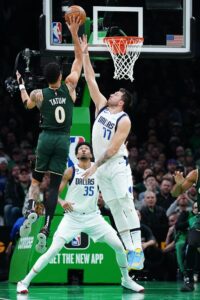After picking up a third straight win – and eighth in their last 10 games – on Friday in San Antonio, the Pelicans have a 14-8 record, which puts them in a tie for the No. 2 spot in the West, just one game back of the top-seeded Suns.
New Orleans was expected to take a significant step forward this season with Zion Williamson returning from the foot injury that sidelined him for all of 2021/22, so the team’s strong start isn’t a major surprise. Still, even fans and observers who expected the Pelicans to emerge as a playoff contender have to be impressed by what they’ve seen so far, as Will Guillory of The Athletic writes.
Despite having their “Big Three” of Williamson, Brandon Ingram, and CJ McCollum fully available for just 10 of 22 games so far, the Pelicans have the fourth-best net rating in the NBA (+6.5) and the second-best mark in the West.
Their success can largely be attributed to their depth, with starters Jonas Valanciunas and Herbert Jones playing important roles, while Trey Murphy, Larry Nance Jr., Jose Alvarado, Devonte’ Graham, Naji Marshall, and even raw rookie Dyson Daniels all play productive minutes too.
Williamson, meanwhile, appears to be emerging as the superstar he was long expected to be come after being drafted first overall in 2019, averaging an outstanding 26.4 PPG, 9.8 RPG, 5.2 APG, 2.0 SPG, and 1.4 BPG on 67.5% shooting in his last five games.
“We are a special team. I think as the season goes on, the world will get to see that,” Williamson said, per Guillory.
If the Pelicans can get their three stars on the court at the same time more often, they’ll look even more “special.” In the 172 minutes they’ve played together so far this season, Williamson, Ingram, and McCollum have a net rating of +16.5, per NBA.com.
Despite the Pelicans’ impressive play so far, oddsmakers are still relatively bearish on their chances of making a deep postseason run. BetOnline.ag gives the Pels only the seventh-best odds to come out of the West, with the Suns, Warriors, Clippers, Nuggets, Grizzlies, and Mavericks all ahead of them.
Perhaps that’s not surprising, given that New Orleans was just 36-46 last season and hasn’t won a playoff series since 2018. Still, there’s a recent blueprint that Willie Green‘s club will be looking to follow — that blueprint was established by Green’s old team in Phoenix.
The 2019/20 Suns went just 34-39, but finished that season on a tear and then made the NBA Finals the following year in their first postseason appearance in over a decade. The Pelicans have looked like a different team since acquiring McCollum and Nance at last season’s deadline and especially since getting Williamson back. If they win one playoff series, maybe more will follow.
As Guillory points out, the next six weeks may shape the consensus on just how high New Orleans’ ceiling in 2022/23 is. Of the team’s next 22 games, 15 are against clubs that are .500 or better, including three matchups with the West-leading Suns in the next two weeks. If the Pels make it through that stretch and continue to hold a top-four seed in the West by mid-January, it’ll be a lot easier to view them as a legitimate contender.
We want to know what you think. How high is the Pelicans’ ceiling this season? Are they a real threat to come out of the West, or are they still a year or two away from making a deep playoff run?
Head to the comment section below to weigh in!
 Still, Jokic ranks behind two players that remain atop Wright’s list for a second consecutive week. At No. 1, it’s Mavericks guard
Still, Jokic ranks behind two players that remain atop Wright’s list for a second consecutive week. At No. 1, it’s Mavericks guard